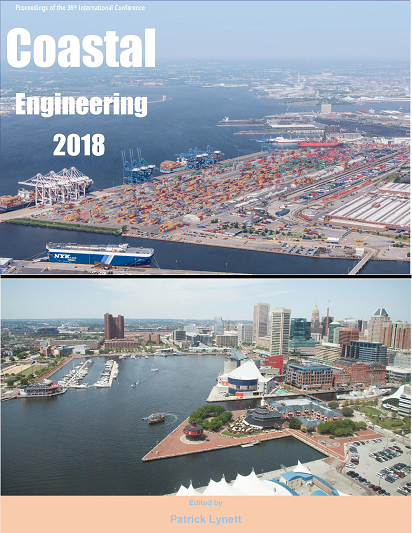Abstract
Numerous laboratory efforts were devoted to improve our understanding to the process of tsunami wave-structure interaction and provide valuable data to validate numerical and analytical models. However, the highly turbulent and multiphase nature of tsunami bores makes the study of their impacts very challenging. Many experimental studies (e.g., Shafiei et al. 2016) employed wave gauges to measure the bore height and estimate the bore front velocity based on shallow water equations. Considering the complexity of the flow and its impact with structures, the conversion between the bore height and the bore velocity is far from straightforward. Therefore, this study attempts to apply the bubble image velocimetry (BIV, Ryu et al. 2005) technique to directly measure the flow velocities during the tsunami bore impact. A tsunami wave, that breaks on a sloping beach, propagates inland as a form of bore, and impinges on a rigid structure, is considered as the scenario of interest. The objective is to perform a comprehensive investigation on the borestructure interaction by examining the fluid velocity, impact pressure, and surge force during the impact event with various structure headings.References
Robertson, I.N., Paczkowski, K., Riggs, H.R., and Mohamed, A. (2013) Journal of Offshore Mechanics and Arctic Engineering, 135(2), 021601.
Ryu, Y., Chang, K.-A., and Lim, H.-J. (2005) Measurement Science and Technology. 16:1945- 1953.
Shafiei, S., Melville, B. W., and Shamseldin, A. Y. (2016) Coastal Engineering, 110:1-16.
Authors retain copyright and grant the Proceedings right of first publication with the work simultaneously licensed under a Creative Commons Attribution License that allows others to share the work with an acknowledgement of the work's authorship and initial publication in this Proceedings.

